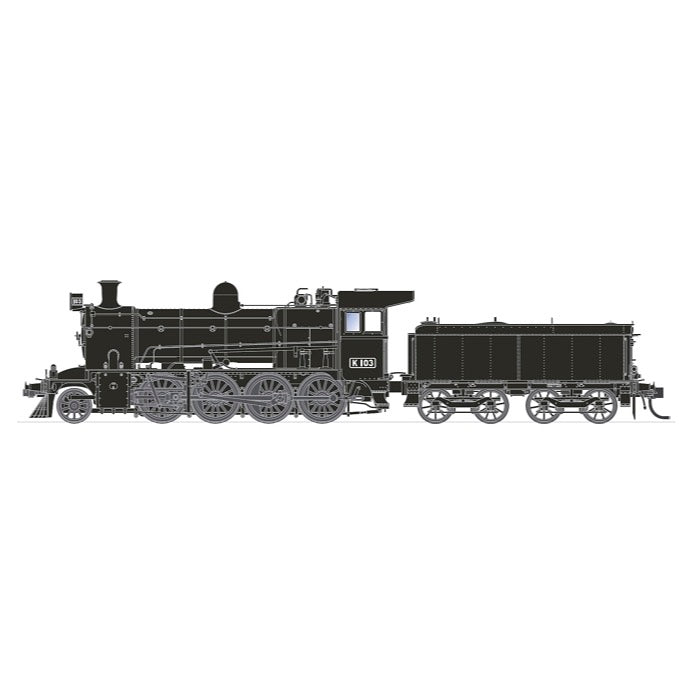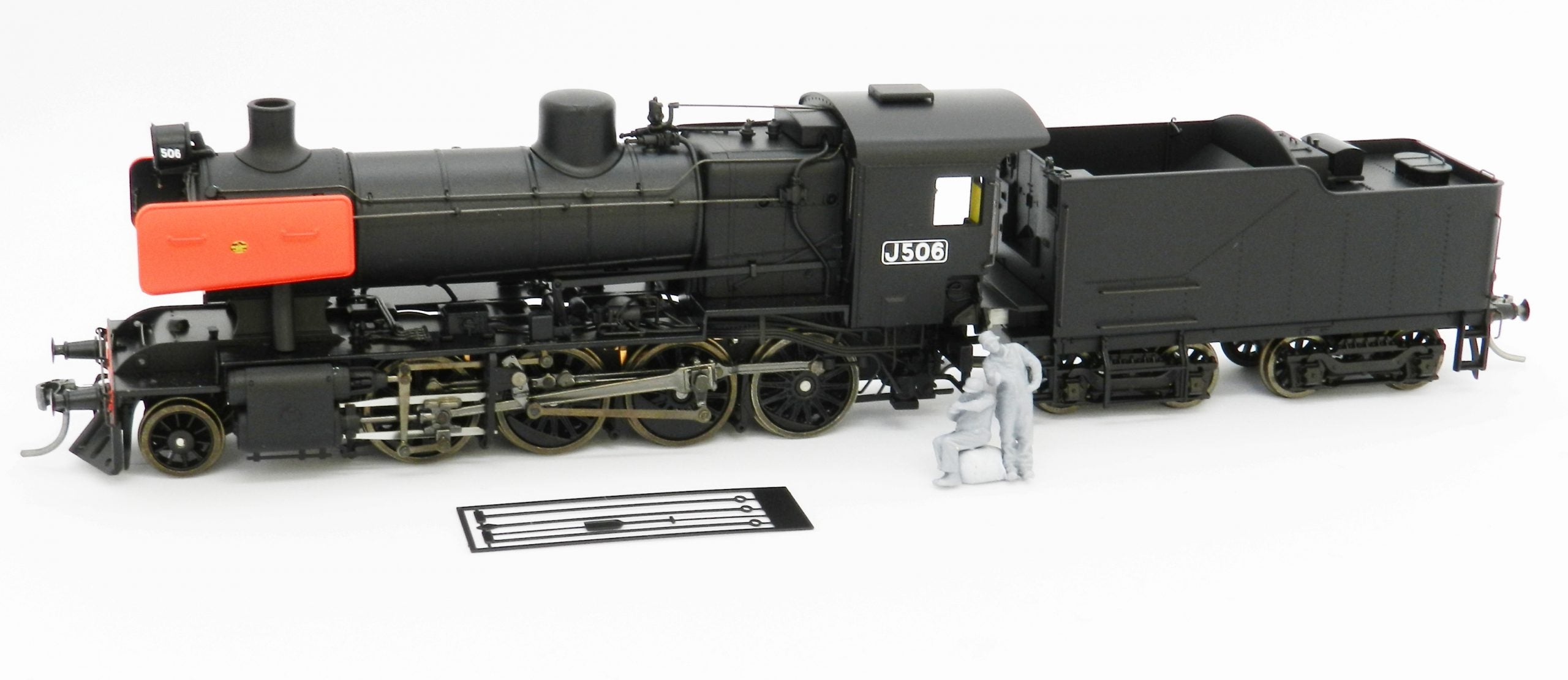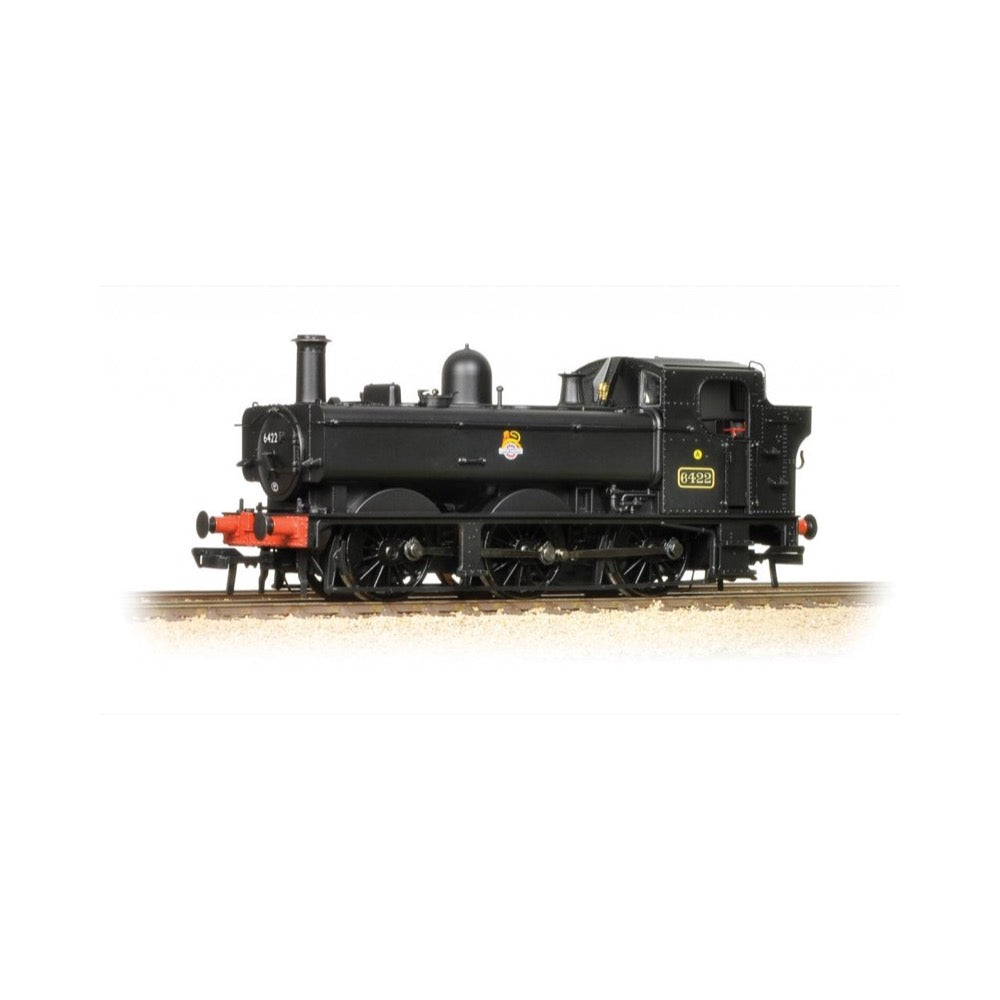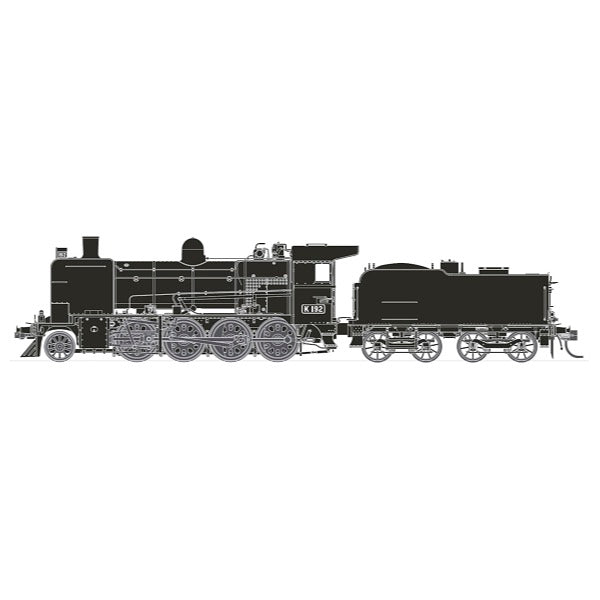
Phoenix Reproductions HO K192 Victorian Railways K Class Locomotive DCC Sound
The Victorian Railways built 53 K class engines at Newport Workshops over a 24 year period, commencing in 1922. The first series of 10 engines were progressively rebuilt in the 1940s to match the performance and visual appearance of the other class members. Later in 1946 the last 9 engines entered service, these engines had single cab side windows and the last 7 engines were fitted Boxpok style driving wheels.
They were extremely versatile engines and could be found and all classes of trains, many worked until the late 1960s and several into the early 1970s.
The Phoenix Reproductions model represents the class in it's later years of government service as well as several colourful liveries of early days preservation.
Features
- Highly detailed Ready-to-Run HO gauge model
- Diecast boiler, frame and footplate
- Genuine Kadee scale head whisker coupler (Tender)
- Separately applied boiler details
- Working LED lights
- All models come standard with an MTC 21 pin motherboard
- Keep Alive Circuit
- DCC version with LokSound V5 decoder
- 22" Minimum Radius
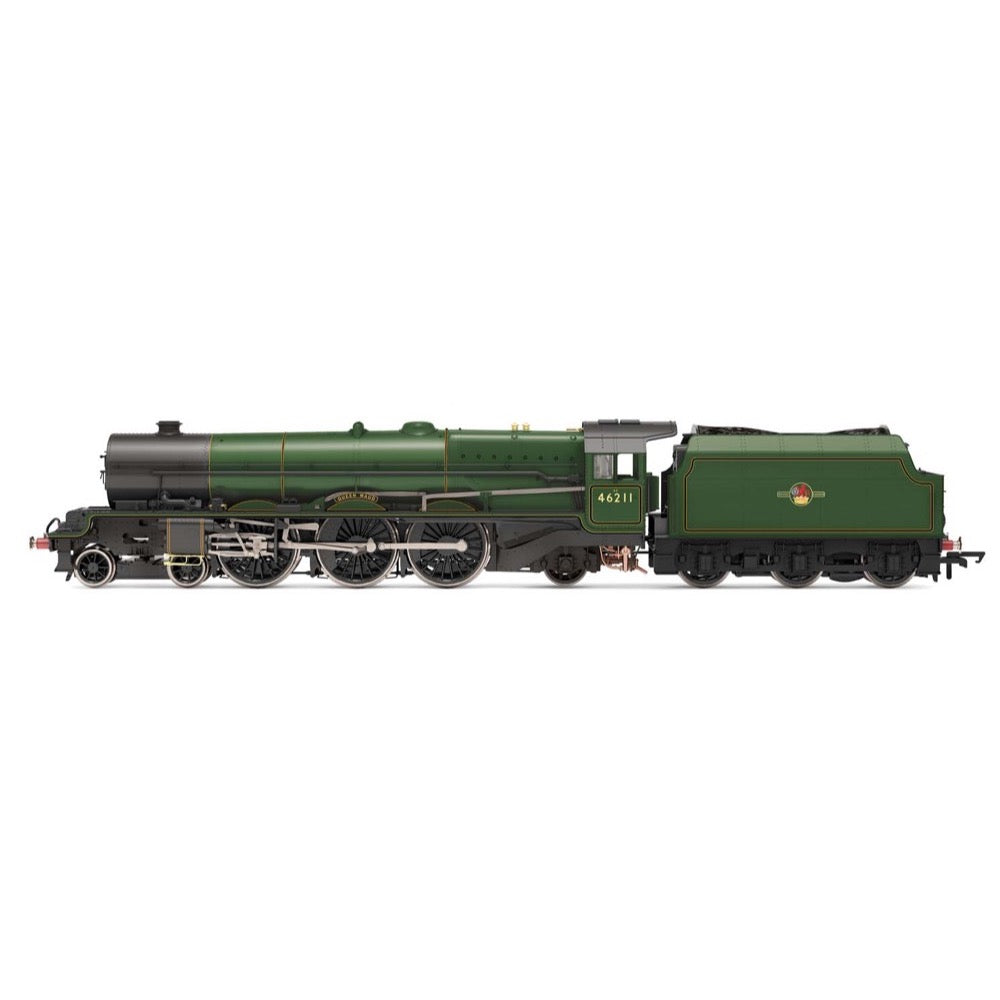
Hornby R3855X OO BR Princess Royal Class 4-6-2 46211 Queen Maud BR Green Late Locomotive
6211 Queen Maud entered traffic on 21 October 1935 allocated to Camden shed and fitted with the riveted 9-ton LMS tender, which it retained until the first heavy service at Crewe during July 1936, when a riveted 10-ton tender was attached.
Fleetingly allocated to Crewe North at the outbreak of war in 1939, Queen Maud moved to the shed permanently on 22 May 1943 where it remained, apart from a two month stint at Edge Hill in 1956, until withdrawn on 7 October 1961.
Specifications
- Item Length - Without Packaging (cm): 36.2
- Item Height - Without Packaging (cm): 5.9
- Item Width - Without Packaging (cm): 11.2
- Item Weight - Without Packaging: 0.8
- Item Scale: 1:76 Scale 00 Gauge
- License: No
- Finish: Painted
- Colour: Green
- Gauge: OO
- DCC Status: 8 Pin socket (NEM 652)
- Operator: British Railways
- Designer: Sir William Stanier
- Wheel Configuration: 4-6-2
- Livery: Late Crest
- Minimum Curve (mm): Radius 2
- Motor: 5 Pole Skew wound
- Number of Parts: 1
- Motor: 5 pole skew wound
- Class: Princess Royal
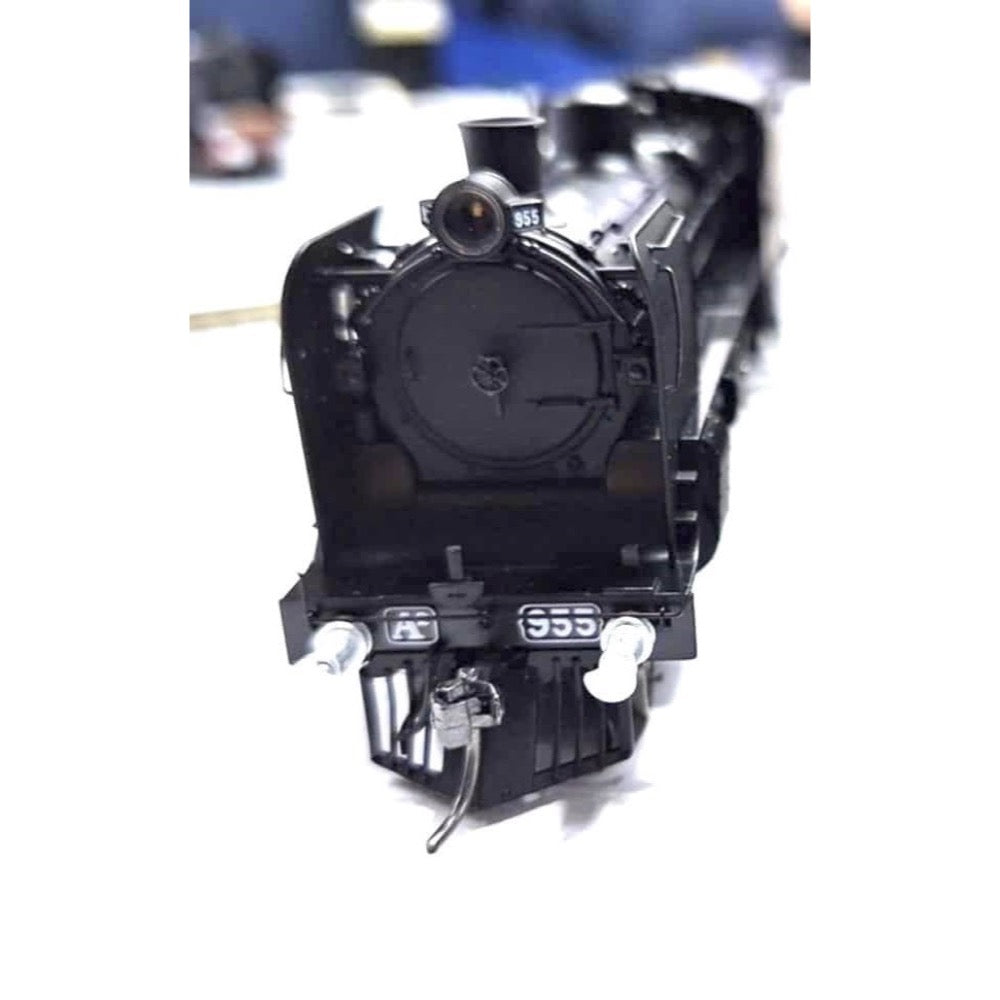
Ixion Models HO A995 VR A2 Class 4-6-0 Steam Locomotive Spoked Oil Tender Bar Cowcatcher
Ixion Models HO A995 VR A2 Class 4-6-0 Steam Locomotive Spoked Oil Tender Bar Cowcatcher
Features
- Smooth-running, powerful motor with flywheel and 40:1 gearbox
- Exceptional level of detail with crisp pad-printed loco numbers
- New push-to-click loco-tender coupling
- Directional lighting
- Speaker installed in tender of all models
- Zimo MS581N18 Next18-plug sound decoder with authentic A2 sound file in all DCC sound versions
- Genuine Kadee #148 scale couplers
- Sprung buffers
- Smokebox painted matt black, satin black applied to rest of loco
- Walschaerts valve gear
- Loco and tender joined in the box
- And, in a World’s First, a full-colour 3D-scanned and colour 3D-printed loco crew is included with each loco in the accessories pack, produced exclusively for Ixion by West Edge 3D.
Specification
- Driving wheels: Spoked
- Tender: Oil
- Cowcatcher: Bar
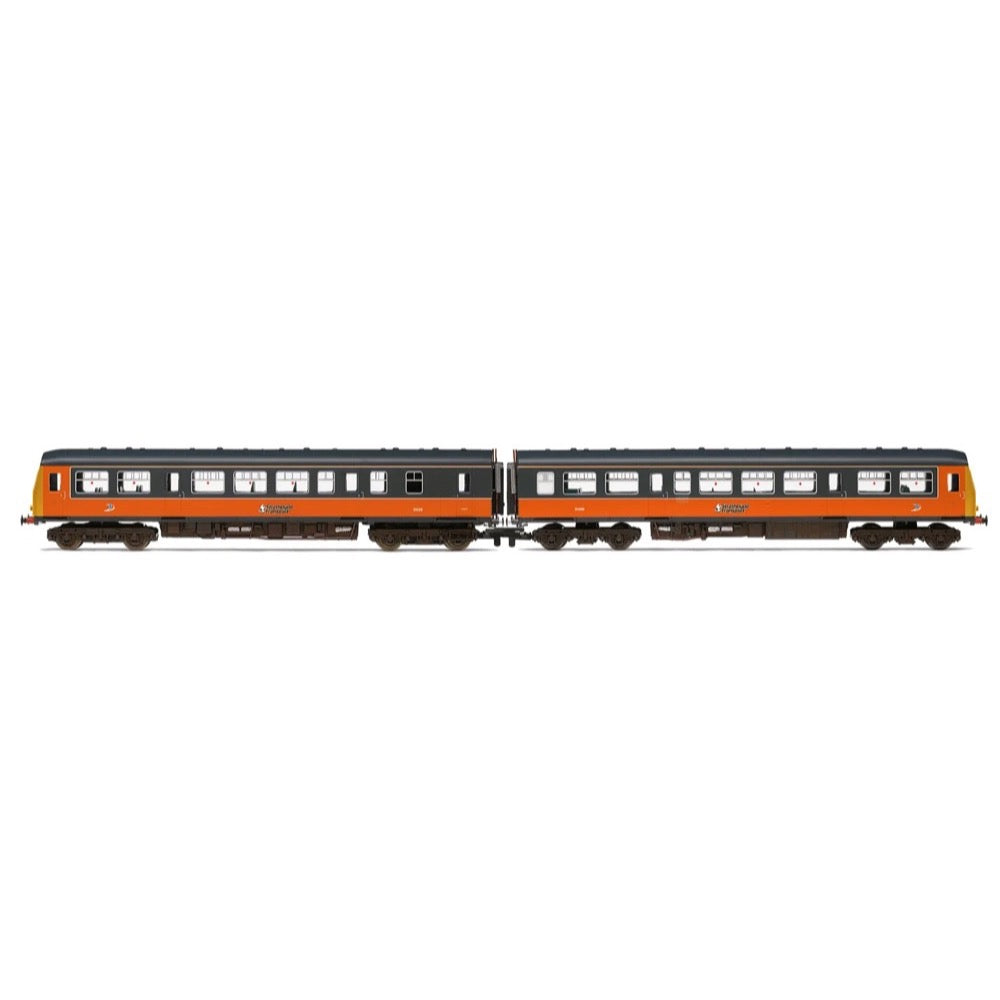
Hornby R30172 OO RailRoad Strathclyde PTE Class 101 DMU 101695 Era 8 Locomotive
Constructed in Birmingham, the Class 101 DMU was one of the longest lasting DMUs to ever see service in the UK. 527 of the class would be built across many orders from BR between 1956 and 1960. The first units would enter BR service in 1956 in the BR green livery.
Class 101 units at the height of their use could be seen in all corners of the UK, at the onset of privatisation in the 1990s the units would appear in all manner of colourful liveries such as the Network South East colours and First North Western. Throughout their life, Class 101 units would occasionally appear as a three car sets where demand dictated.
Unit 101695 is made up of units 51226 and 51499. A long period of the locomotives post-BR life was spent in Scotland in the striking Strathclyde PTE livery. In 2023, the unit is preserved and in working order on the Mid Norfolk Railway having been repainted from the Strathclyde livery into its introductory colours of BR green.
Specification
- Item Length - Without Packaging (cm): 26.5
- Item Height - Without Packaging (cm): 5
- Item Width - Without Packaging (cm): 3.5
- Item Weight - Without Packaging: 0.45
- Item Scale: 1:76 Scale 00 Gauge
- Finish: Painted
- Colour: Orange and Black
- Gauge: OO
- DCC Status: DCC Ready 8 pin socket
- Operator: Strathclyde PTE
- Designer: Metro-Cammell
- Wheel Configuration: Bo-Bo
- Livery: SPTE Orange and Black
- Minimum Curve (mm): Radius 2
- Motor: 3 Pole
- Number of Parts: 1
- Buffer Type: Separate Plastic Buffers
- Coupling Type: Fixed Tension Lock
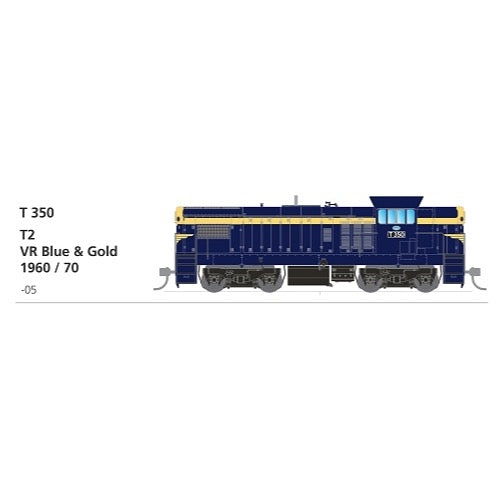
SDS Models HO T350 VR Blue & Gold T2 Series T Class Locomotive DCC Sound
The Victorian Railways received their second series of T class locomotives from late 1959, these were mechanically similar to the first series but featured a new raised height operating cab layout. This new style of raised cab design featured throughout the remainder of the T class series.
SDS Models are pleased to offer the inclusion of the T-2 series within our range of Victorian Railways T class models.
Based upon the tried and proven Austrains T class mechanism we have comprehensively retooled almost every item, bringing the model inline with our exacting scale and design standards. Some 220 new or re-made parts are involved in the production of the four series we are offering below. All the models now feature prototypically correct width long hoods, series specific and appropriate fuel tank and battery box combinations, improved appearance bogie side frames and brake shoe / wheel tread alignment and a host of other design detail enhancements.
Features
- Highly detailed Ready-to-Run HO gauge model
- Precisely tooled plastic body (ABS)
- Genuine Kadee scale head whisker coupler
- Separately applied handrails and detail parts
- 5-Pole skew wound electric motor and dual flywheels
- All wheel drive and electrical pickup
- LED head and marker lights
- All models come standard with an MTC 21 pin motherboard
- Exclusive and locally recorded EMD sounds by DCCSound
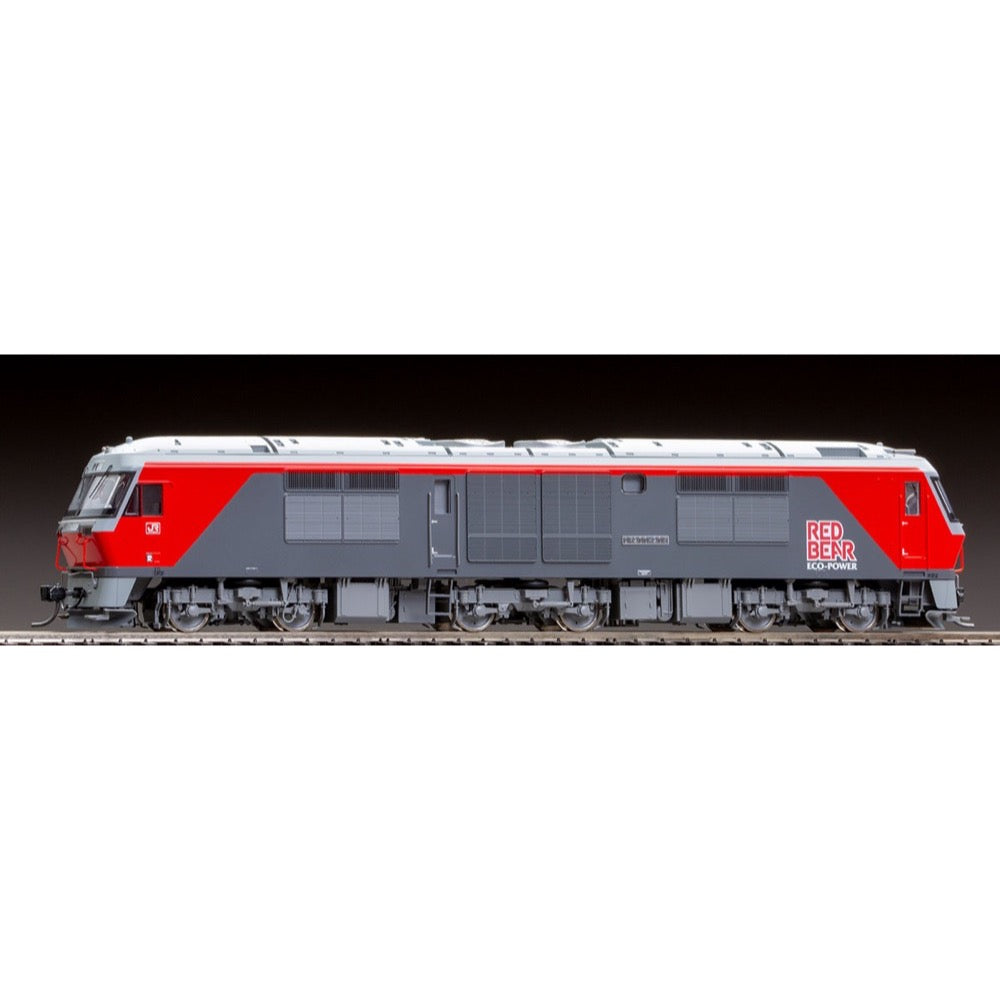
Tomix 6211 HO DF200-200
The DF200 series is a diesel electric locomotive developed by JR Freight, with the prototype appearing in 1992.
Since its introduction, it has been used mainly for freight transport within Hokkaido, but some of the 100 series have been transferred to Honshu and converted to the 200 series at the same time.
All 200 series locomotives belong to the Aichi Locomotive Depot and are mainly used on the Kansai Main Line.
Features
- Newly produced reproduction of underfloor equipment that was changed from the DF200-100th generation
- Reproduces the appearance without the "JRF" marking on the side of the car body
- "RED BEAR" logo is printed
- Reproduces the "JR FREIGHT" marking under the side window on the driver's side
- Selectable car number and metal transfer sheet included
- District nameplate sticker included "Love"
- Manufacturer nameplate and car body markings are reproduced by printing
- Headlights are illuminated by incandescent color LEDs
- Uses KD No. 5 coupler
- Equipped with energized terminals
- Can pass through a minimum radius of R600 (excluding S-shaped lines)
Accessories
- Runner parts (etching): Wiper
- Runner parts (etching): Hook
- Runner parts: Handrail (vermilion)
- Runner parts: Handrail (gray)
- Runner parts: Release lever
- Runner parts: Air hose, angle cock
- Runner parts: Dolly cable, step
- Runner parts: Step
- Runner parts (etching): Number plate base (for front)
- Runner parts (etching): Number plate base (for side)
- Runner parts: Signal flare
- Runner parts: Whistle
- Parts: Hole drilling jig
- Parts: Roof removal jig
- Sticker: District nameplate
- Transfer sheet (metal): Vehicle number

Hornby R30136 OO LNER Class B17 5 4-6-0 2859 East Anglian Era 3 Locomotive
The 4-6-0 B17 was one of the underrated workhorses of the LNER. In a company with such heavy hitters as the A3 and A4 locomotives it is easy to see why some less visually impressive locomotives may be overlooked, but the importance of some of these other models should not be understated.
The B17 was born out of necessity, the Great Eastern Main Line between London and Norfolk had weight restrictions littered across the route that the larger pacifics exceeded, while the B12 class of locomotives that worked the route were struggling to keep up with the demand for longer and more intense services.
In total 73 examples of the class were built and 73 examples were scrapped. As of 2023, there is a project being undertaken to complete a new built B17, 61673 Spirit of Sandringham.
In September 1937 the LNER introduced their East Anglian service, with the first train departing on the 27th. To celebrate this service, and to bring the locomotives more in line with several other recent LNER services which were all hauled by A4 locomotives two examples of the class were fitted with A4 style streamlining. These were designated the B17/5s.
'East Anglian' started out life as 2859 Norwich City, before gaining its streamlining under the LNER in 1937. The locomotive retained this streamlined shell into BR ownership until 1949 when the locomotive was rebuilt as a B17/6 in line with much of its classmates. The locomotive would go on to be withdrawn in March 1960 wearing the BR number of 61659 and was not preserved.
This model of the B17 includes a newly tooled body with full 'clothing' and cab detail. The locomotive features a 5 pole motor with flywheel and couples to rolling stock via NEM couplings front and rear.
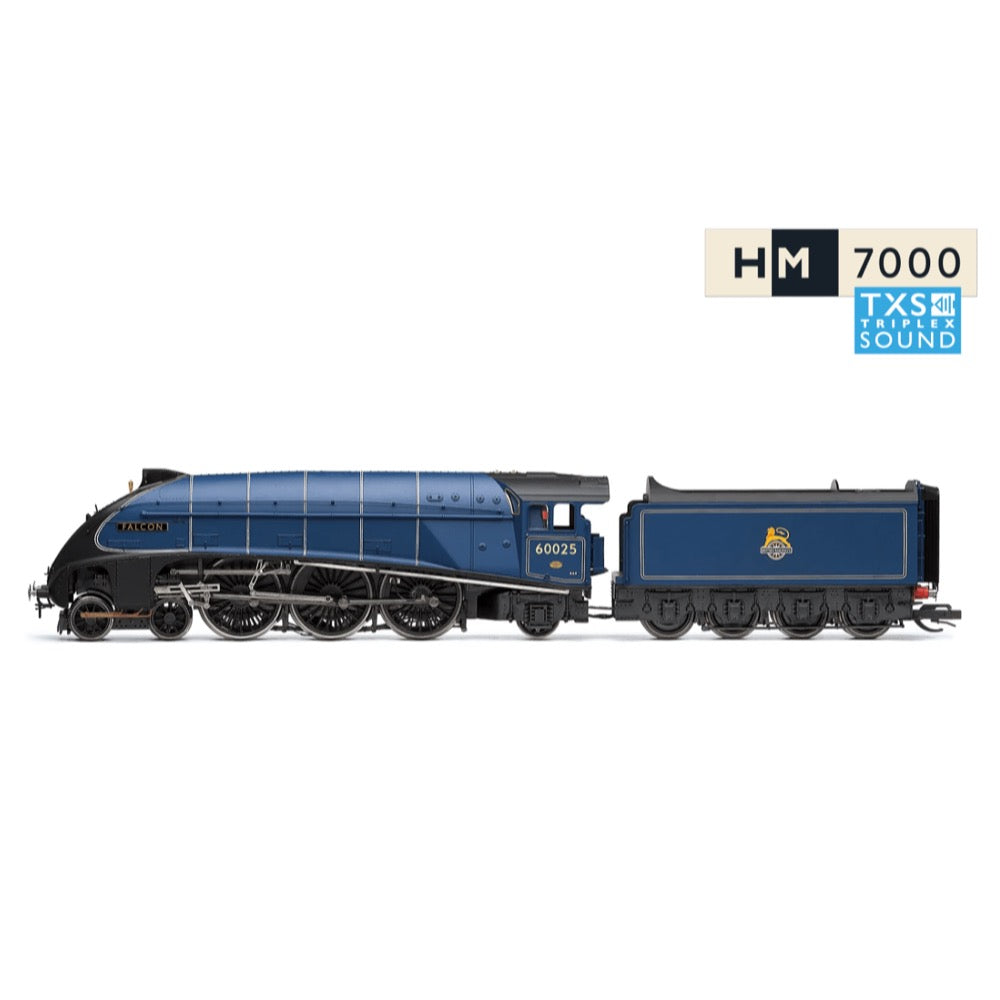
Hornby TT3009M TT BR Class A4 Class 4-6-2 60025 Falcon Digital Locomotive
The LNER Gresley A4 is one of the most iconic express locomotives in Great Britain, with its streamlined casing a classic symbol of the attitude towards speed and design in the 1930s, which saw increased competition to the railways from road and air travel. The LNER Board knew that they had to make travel between the major cities faster, comfortable and more reliable.
Nigel Gresley, the LNER's Chief Mechanical Officer, travelled on the Fliegende Hamburger diesel locomotive in Germany and was impressed by its streamlining, although he realized it was only efficient at high speeds. Gresley was certain that a modified A3 Pacific, with streamlining, could haul greater loads than other locomotives at the same speed or faster and a series of trials were conducted to confirm the A3's suitability.
With the trials successfully completed, the LNER Board gave Gresley the go-ahead to create the "Silver Jubilee" streamlined trains, the first of the new streamlined A4s.The streamlining of the A4s' steam circuit, higher boiler pressure and extension of the firebox to create a combustion chamber made them more efficient than the A3 as they consumed less coal and water- especially later on when they were also fitted with a Kylchap double chimney. This improved their free steaming capabilities further. Their streamlined design not only made them capable of high speeds, but created an up draught of smoke, obscuring the driver's vision, a major problem on the new Class A4 engines. The story goes that during wind tunnel testing, after several unsuccessful efforts to get the smoke to lift clear, a thumbprint was inadvertently left on the clay model just behind the chimney. This succeeded in clearing the smoke and was incorporated into the final design.
4484 Falcon entered service with LNER in January of 1937, following the broad early naming format based around Gresley’s penchant for birds. The locomotive would go on to serve under BR as 60025 before being scrapped in October of 1963.
Specifications
- Item Length - Without Packaging (cm): 19.1
- Item Height - Without Packaging (cm): 3.7
- Item Width - Without Packaging (cm): 2.5
- Item Weight - Without Packaging: 0.16
- Item Scale: 1:120 Scale
- Finish: Painted
- Colour: Blue
- Gauge: TT
- DCC Status: Next 18 Socket (NEM 662)
- Operator: BR
- Designer: Sir Nigel Gresley
- Wheel Configuration: 4-6-2
- Livery: BR Blue
- Minimum Curve (mm): Radius 2
- Motor: 3 Pole
- Number of Parts: 1


